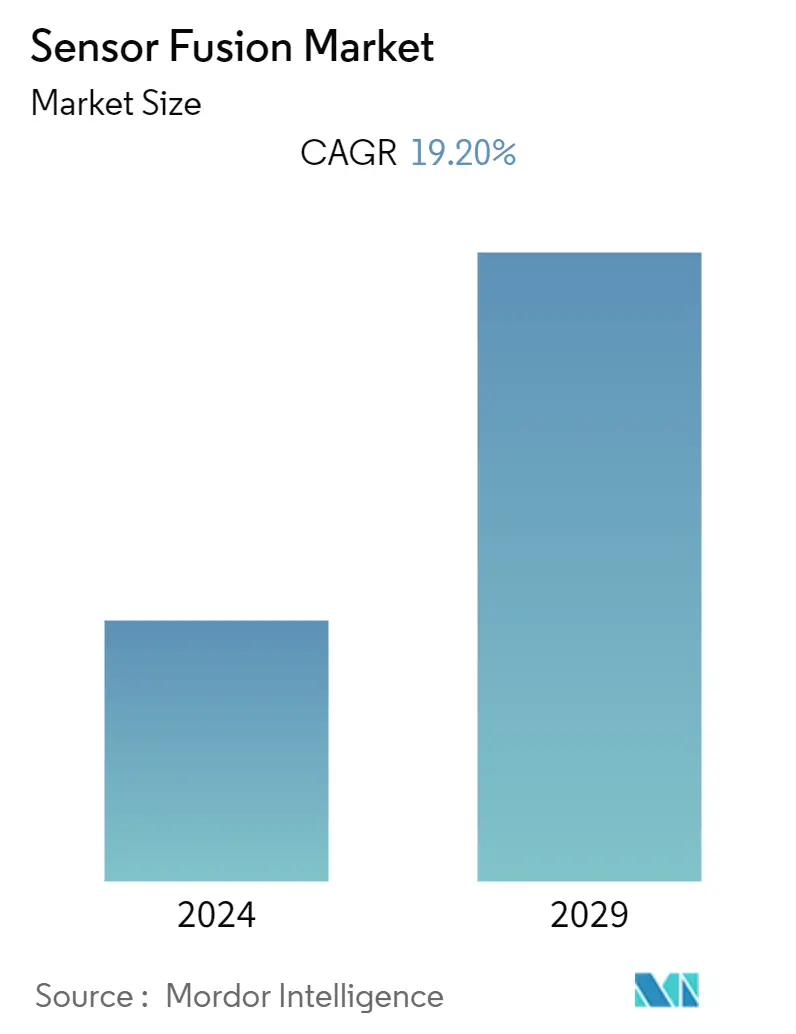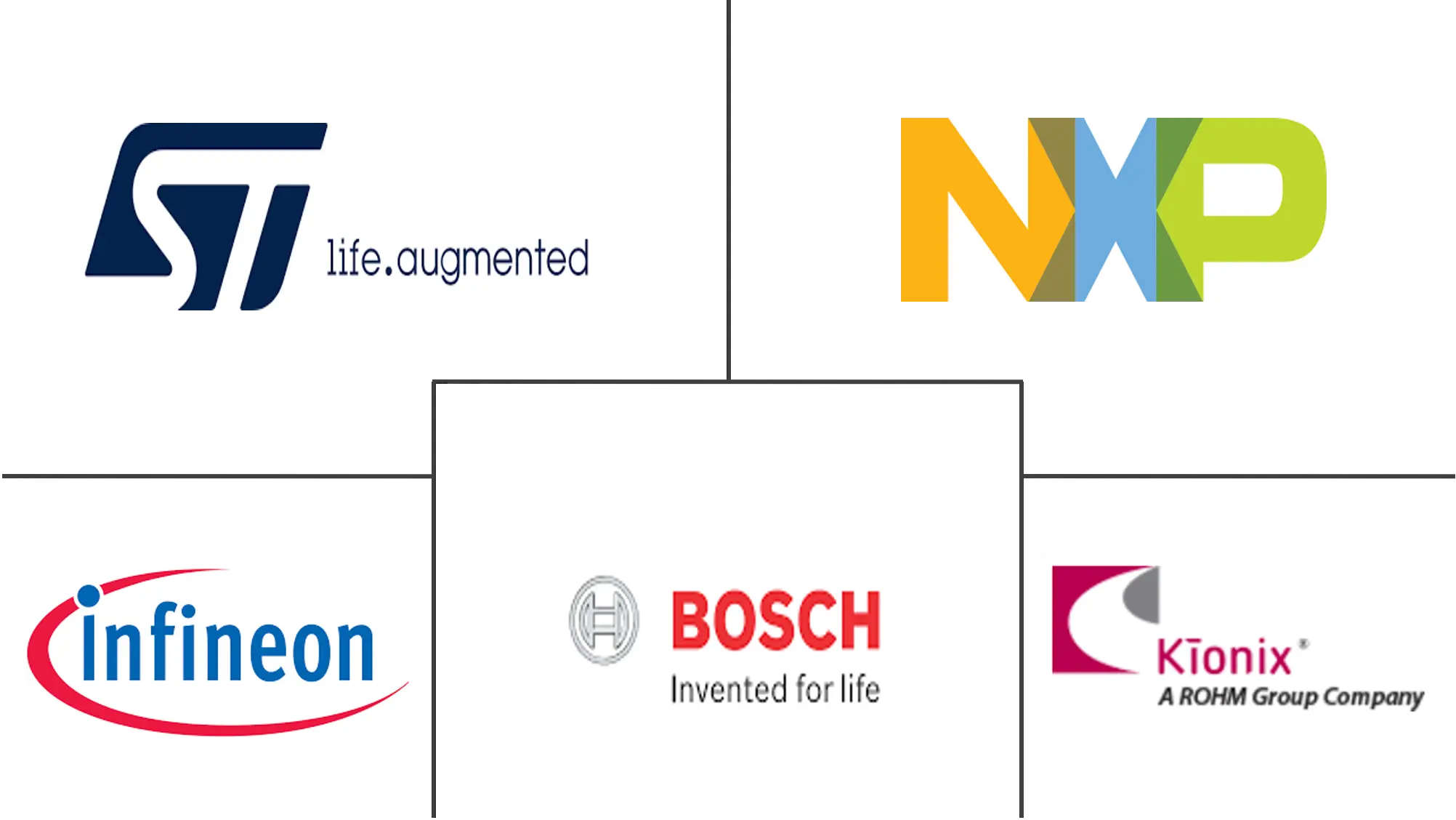Market Size of Sensor Fusion Industry

| Study Period | 2019 - 2029 |
| Base Year For Estimation | 2023 |
| CAGR | 19.20 % |
| Fastest Growing Market | Asia Pacific |
| Largest Market | North America |
| Market Concentration | Low |
Major Players
*Disclaimer: Major Players sorted in no particular order |
Need a report that reflects how COVID-19 has impacted this market and its growth?
Sensor Fusion Market Analysis
The Sensor Fusion Market is expected to grow by registering a CAGR of 19.2% during the forecast period. The growing trend of autonomous vehicle and advanced driver assistance systems (ADAS) are further integrating new radar, camera, lidar, and GNSS sensors into these vehicles. This rapid change requires flexible test systems to deploy products quickly and safely, driving the industry's need for sensor fusion systems. Therefore, the growing functionality of autonomous vehicles is mainly driving the growth of the sensor fusion market over the forecast period.
- Resolving contradictions between sensors, synchronizing sensors, predicting the future positions of objects, and achieving automated driving safety requirements are some of the primary objectives of sensor fusion in an autonomous vehicle application. The growing integration of autonomous features in automobiles is expected to drive the growth of the studied market during the forecast period.
- According to the World Economic Forum (WEF), more than 12 million fully autonomous cars are expected to be sold annually by 2035, and autonomous vehicles will account for 25% of the global automotive market. Furthermore, according to Intel, a single autonomous vehicle can generate an average of 4 terabytes of data per day. Hence, sensor fusion solutions can play a significant role in utilizing this massive data in real time.
- Stringent government regulations across the globe are also fuelling the demand for the studied market products. For instance, in Europe, Euro NCAP (European New Car Assessment Program) mandates the deployment of at least one driver assistance system. Countries like Japan and the United States are also adopting similar criteria in their national NCAP rules.
- Furthermore, The rising adoption of 5G technology is further expanding the scope of sensor fusion towards heavy commercial vehicles and autonomous vehicles like drones and industrial robots. 5G will massively bring Vehicle-to-everything (V2X) technology to the automotive and transportation industry, increasing the demand for sensor fusion due to growth in the markets Mobility-as-a-Service (MaaS), smart bus, and robot taxis, among others.
- Many automotive manufacturers are also initiating sensor fusion development programs, mainly to leverage competitive advantage. For instance, in May 2022, LeddarTech, a provider of flexible, robust, and accurate ADAS and AD sensing technology, opened LeddarTech's Sensor Fusion and Perception Development Center in Tel Aviv.
- However, standardization is one of the major factors hindering the evolution of sensor fusion systems, as the absence of any specific global standard significantly hinders the further evolution and mass adoption of this technology.
- The recent recession in the global automotive sector owing to the COVID-19 outbreak has not only affected the demand in the studied market but can have a mid-term impact on the adoption rate considering the after-effects of the pandemic. However, in the long term, the growth of electric and autonomous vehicles will support the studied market's growth.
